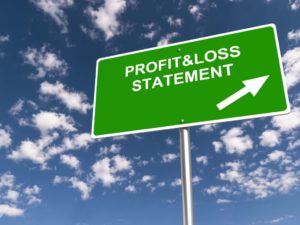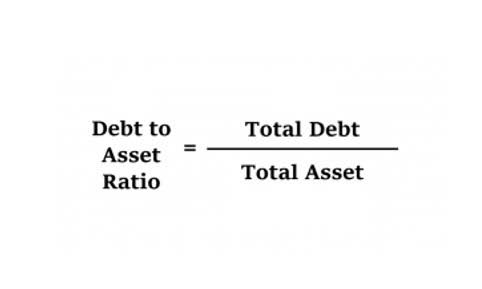
Another reason CBA is vital is its role in fostering transparency and accountability. By clearly documenting the rationale behind a decision, including all assumptions, costs, and benefits, it ensures that stakeholders understand the basis for the choice. This is particularly critical in public projects or corporate investments where multiple parties are net sales involved and scrutiny is high.

Implementing employee training programs
Learn financial statement modeling, DCF, M&A, LBO, Comps and Excel shortcuts. On the other hand, the project benefit – which refers to revenue here – is as follows. From Year 1 to Year 2, the project cost is anticipated to be $6 million and $4 million, with the cost fixed at $2 million for the remainder of the forecast period. By submitting this form, you consent to receive email from Wall Street Prep and agree to our terms of use and privacy policy. Join over thousands of organizations that use Creately to brainstorm, plan, analyze, and execute their projects successfully. This clarifies roles and responsibilities by listing who is Responsible, Accountable, Consulted, and Informed for each task in your project, ensuring clear communication during the analysis.
Reduction In Design Time
Meet with your project management team and decide whether to proceed or halt the project. When you finish categorizing all the cost and benefit items, it’s time to assign them a monetary value. Remember, this is teamwork, and you should apply proper team management strategies to achieve the best outcome. Although CBA is crucial for the decision-making process in project management, it’s not free from limitations. Based on these projections, it seems that the business would benefit https://www.bookstime.com/articles/real-estate-escrow financially from investing in the new equipment. However, the business should also take into account other elements, including the machine’s dependability, sales steadiness, and any other hazards or difficulties.
Opportunity Cost: The Hidden Price of Every Choice
To calculate the CBA ratio, you must first use the PV formula to find the present value of the costs and the benefits of the project that’s being analyzed. For intangible items, use estimation techniques or proxy measures to assign a value. For example, if a new marketing strategy is expected to increase revenues by 20%, calculate that potential increase based on current sales figures. With over a decade of experience, I am certified in Lean Six Sigma and Project Management.
While estimating costs, keep in mind that there are both upfront and ongoing costs which need to be taken into account for a cost-benefit analysis. You should also consider cost of intangibles as well as opportunity costs that may be overlooked. Quickonomics provides free access to education on economic topics to everyone around the world. Our mission is to empower people to make better decisions for their personal success and the benefit of society. The breakeven point typically refers to a dollar amount or the number of units sold whereby total revenues equals total costs. A CBA can be used regardless of the projects being mutually exclusive or not.

The present value of benefits of a seriesof cash flows equals the likewise discounted costs. This situation is obviouslymore preferable than options with a BCR lower than 1. However, if there arealternatives with a benefit-to-cost ratio exceeding 1, they are likely to befavored. Assigning monetary values to intangible benefits (e.g., environmental impact) or non-market costs (e.g., social costs) can be challenging. Cost-benefit analysis is a systematic approach that helps businesses understand the economic implications of a decision. Even if cost-benefit analysis itself is a tool, you should implement project management tools to ease the entire process.

Not all cost-benefit analyses that result in net benefit should be accepted. For example, a company must consider the project’s risk, alignment with its company image, and capital limitations. Well, strap in, because we’re about to explore some exciting ways to enhance cost-benefit analysis in psychological practice.
- The financial pros and cons are typically only a portion of what matters when making a decision.
- You can add as many columns as you like and filter the sheet to capture only the relevant data.
- But the concept of CBA as we know it dates to Jules Dupuit, a French engineer, who outlined the process in an article in 1848.
- There are other methods that complement CBA in assessing larger projects, such as NPV and IRR.
- Other costs and benefits, like the cost of poor customer satisfaction or benefit of brand awareness, are impossible to measure precisely, but can still be estimated.
- In this article, we’ll walk you through the process of cost benefit analysis, and offer insight and tips from industry experts.
- If you don’t give all the costs and benefits a value, then it will be difficult to compare them accurately.
This holistic approach can provide a more nuanced understanding of decision-making processes. What’s considered a benefit in one culture might be seen as a cost in another. It’s like trying to use the same recipe in different kitchens around the world—the ingredients and tools available can vastly change the outcome. Then there’s the issue of individual differences in decision-making styles. Some people are gut-feeling followers, while others are data-driven analyzers. It’s like trying to fit square pegs into round holes—one size definitely does not fit all when it comes to decision-making.
Environmental Policy
Then there’s risk assessment and probability cost benefit analysis simple definition estimation, which is basically our brain’s attempt at being a fortune teller. We try to predict the likelihood of different outcomes, often with hilariously inaccurate results. It’s why we might worry more about shark attacks than car accidents, even though the latter is far more likely to occur. Now, you might be wondering, “What on earth is cost-benefit analysis, and why should I care?
